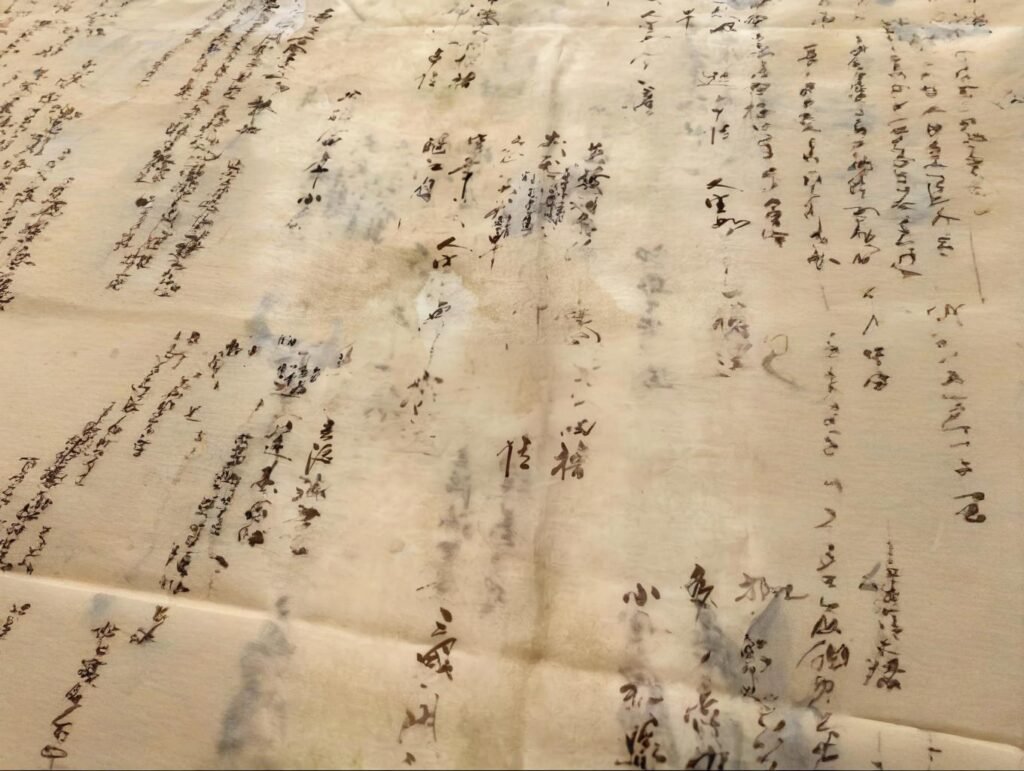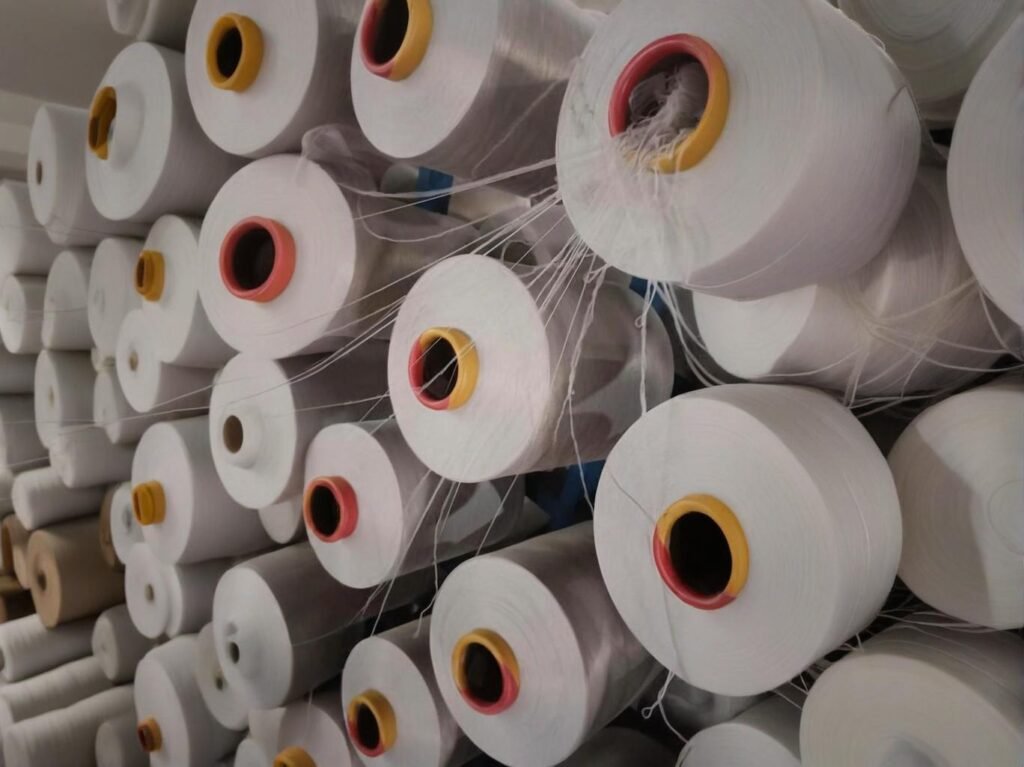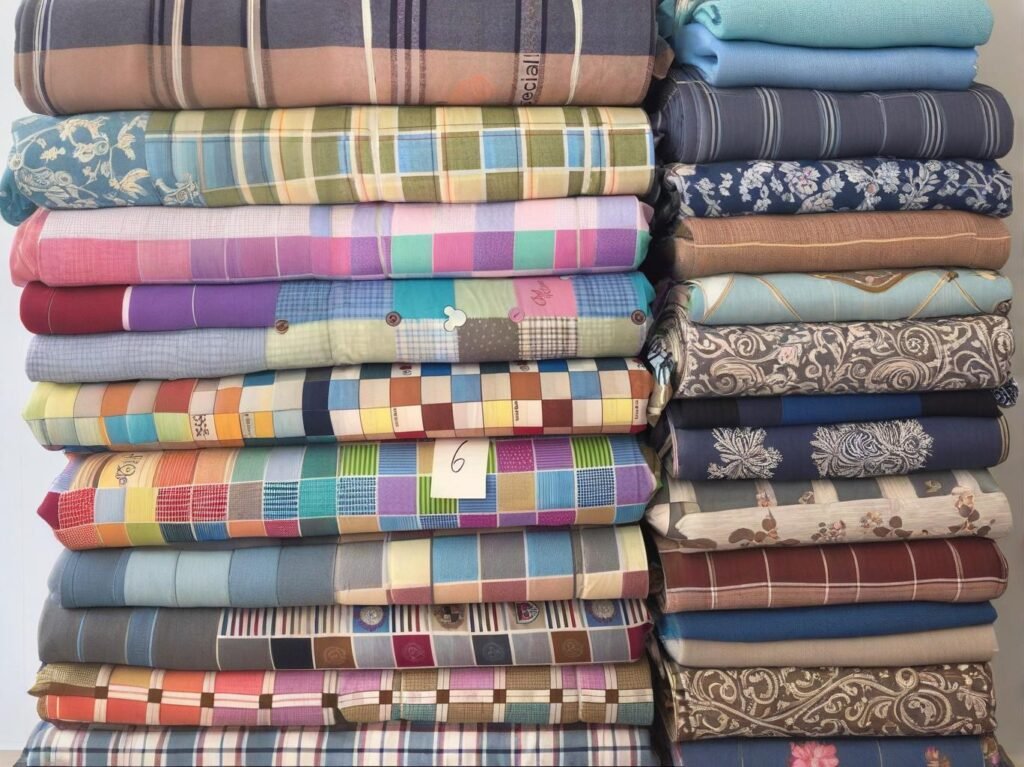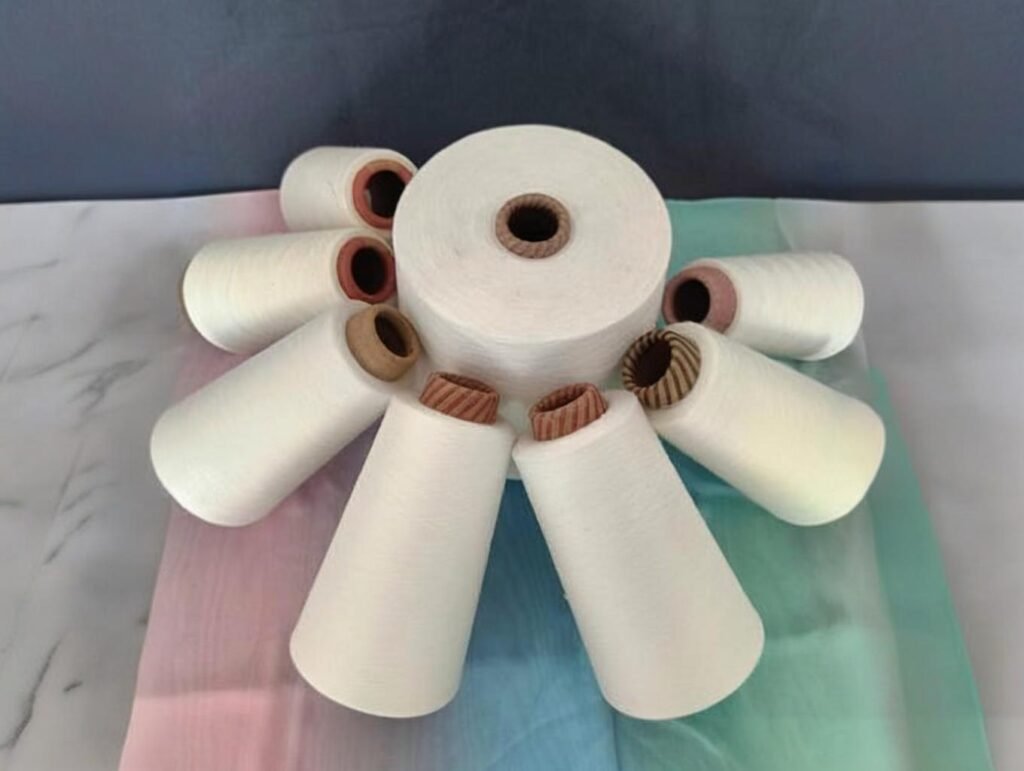In a world increasingly shaped by functionality, performance, and speed, polyester fiber has quietly become the workhorse of the global textile market. From sportswear to car seats, uniforms to upholstered furniture, polyester threads its way through nearly every segment of modern life. But why has this synthetic fiber risen to such dominance—especially when natural fibers like cotton, wool, or silk have centuries of heritage?
Polyester fiber is a synthetic polymer made primarily from petroleum. It dominates textile manufacturing due to its durability, low cost, wrinkle resistance, and adaptability across industries—from fashion to industrial use.
The numbers speak volumes. According to a report by Textile Exchange, polyester accounted for over 54% of all global fiber production in 2023, nearly four times the share of cotton. Its reign is not just about affordability—it’s about versatility, scalability, and performance in applications where natural fibers fall short.
To understand how polyester came to rule the textile world, we need to look beyond the marketing buzz and dive into its chemistry, its evolution, and its role in reshaping how the world makes—and wears—fabric.
What Is Polyester Fiber and How Is It Made?

Polyester fiber is a synthetic textile material derived from petrochemical sources, primarily polyethylene terephthalate (PET). It is produced through a polymerization process where purified terephthalic acid (PTA) reacts with monoethylene glycol (MEG), creating long molecular chains that are then spun into fibers.
Understanding Polyester Production
Polyester Manufacturing Process Table
| Step | Description |
|---|---|
| Polymerization | PTA and MEG are heated and reacted to form a molten polymer |
| Melt Spinning | The polymer is extruded through spinnerets to form filaments |
| Drawing | The fibers are stretched to align molecular chains |
| Crimping (optional) | Fibers are mechanically crimped to add texture or bulk |
| Finishing | Anti-static, moisture-wicking, or other finishes applied |
| Packaging | Fibers are baled or wound for shipment to textile mills |
Key Properties of Polyester Fibers
- High strength-to-weight ratio Makes it ideal for durable yet lightweight textiles.
- Thermoplastic nature Allows reshaping under heat—useful for pleating and shaping.
- Hydrophobic (water-resistant) Naturally repels water, making it fast-drying and mold-resistant.
- Non-biodegradable It does not break down naturally but can be recycled into rPET.
Case Study
A major outdoor apparel brand transitioned from nylon to polyester in several product lines due to polyester’s lower water absorption rate and better print compatibility, reducing drying time during manufacturing by 22% and improving production yield.
Critical Perspective
- Raw Material Dependency: Polyester’s primary feedstock is oil. This links its price and sustainability to global energy markets and extraction practices.
- Alternative Production Methods: Bio-based polyesters and recycled PET (rPET) are helping to decouple polyester from virgin fossil inputs.
- Fiber Engineering: Advances like microfiber polyester, hollow-core filaments, and cationic dyeable polyester expand the possibilities for texture, dyeing, and moisture control.
Why Has Polyester Become the Most Widely Used Textile Fiber?
Polyester leads the textile industry because it delivers performance, efficiency, and cost-effectiveness at industrial scale. Its ability to be mass-produced with consistent quality, combined with exceptional physical properties, makes it a universal choice across fashion, interiors, automotive, and industrial textiles.
Strategic Advantages That Drive Global Use
Polyester vs. Other Fibers – Global Market Share (2023)
| Fiber Type | Global Market Share (%) | Key Traits |
|---|---|---|
| Polyester | 54% | Durable, versatile, low-cost |
| Cotton | 22% | Soft, breathable, natural |
| Nylon | 6% | Strong, elastic, abrasion-resistant |
| Viscose/Rayon | 6% | Semi-natural, breathable, drapes well |
| Wool, Silk, Others | 12% | Niche, high-end, limited availability |
Factors Behind Polyester’s Dominance
- Low Production Cost per Unit Polyester is cheaper to produce than cotton or nylon, especially in high volumes.
- Process Efficiency Polyester can be dyed rapidly and consistently, with reduced water usage compared to cotton dyeing.
- Fabric Versatility It can be woven, knitted, brushed, or blended with other fibers to meet different tactile and technical demands.
- Easy Maintenance Polyester garments are wrinkle-resistant, quick-drying, and often do not require ironing—favorable for end consumers and commercial laundries.
- Brand Customization Benefits The smooth surface of polyester enables high-definition sublimation printing, which is why it’s preferred for teamwear, promotional gear, and brand apparel.
Real-World Example
In Vietnam, a leading T-shirt manufacturer producing for international retailers shifted 80% of its basic tees to polyester or poly-blends. Why? Polyester’s consistent yarn quality reduced fabric defects by 34% and boosted automated cutting line efficiency by 18%.
Critical Perspective
- Environmental Debate: Polyester’s fossil origin and non-biodegradability make it a controversial leader. Critics argue that convenience comes at the cost of long-term environmental accumulation.
- Innovation Driving Leadership: The rise of rPET, closed-loop recycling, and dye-sublimation printing systems have positioned polyester as a more flexible platform for sustainable innovation than its natural counterparts.
- Consumer Awareness: As consumers become more eco-conscious, brands using polyester must pair it with transparency, recyclability, and low-impact finishes to maintain trust.
How Does Polyester Compare to Natural Fibers Like Cotton and Wool?

Polyester is more durable, cost-efficient, and easier to maintain than natural fibers like cotton and wool. However, it lacks the breathability, softness, and biodegradability that many buyers associate with natural materials. The comparison often comes down to performance needs, user comfort, environmental goals, and price sensitivity.
Side-by-Side Comparison of Polyester vs Natural Fibers
Performance Comparison Table
| Attribute | Polyester | Cotton | Wool |
|---|---|---|---|
| Fiber Origin | Synthetic (petroleum-based) | Natural (plant-based) | Natural (animal-based) |
| Moisture Behavior | Wicks moisture, dries fast | Absorbs moisture | Absorbs and insulates |
| Wrinkle Resistance | High | Low | Medium |
| Shrinkage Risk | Very low | High (unless pre-treated) | High (if not treated) |
| Abrasion Resistance | High | Moderate | Low to moderate |
| Biodegradability | No | Yes | Yes |
| Hypoallergenic | No (can cause irritation) | Yes | Yes (for untreated fibers) |
| Cost Per Unit | Low | Medium to high | High |
Key Takeaways
- Comfort & Breathability: Cotton and wool breathe better, making them more comfortable in hot or skin-contact applications like undergarments or bedding.
- Performance Wear: Polyester is king in activewear, uniforms, and rainwear due to its quick-dry, anti-wrinkle, and durable properties.
- Price Elasticity: Natural fibers fluctuate more in price due to climate and farming variables. Polyester remains stable and predictable.
Real-World Use Case
A Canadian hotel chain originally outfitted housekeeping staff in cotton-poly blend uniforms. After a year, they switched to 100% polyester for faster drying times and fewer ironing cycles—saving over 240 labor hours monthly in uniform maintenance.
Critical Perspective
- Sensory Bias: Many consumers instinctively associate natural fibers with “quality.” Brands using polyester must use fabric finishes (e.g., peach skin, brushed poly) and thoughtful design to overcome this perception.
- Blending Strategies: Cotton-poly blends (e.g., 60/40 or 80/20) offer a sweet spot—balancing comfort and performance in many retail and commercial settings.
- Environmental Trade-Off: While natural fibers biodegrade, their water, pesticide, and land use can be significant. Polyester’s recycling potential with rPET gives it a unique sustainability angle—if managed properly.
What Are the Key Properties That Make Polyester Ideal for Manufacturing?
Polyester is ideal for manufacturing due to its high strength, elasticity, dimensional stability, chemical resistance, ease of processing, and compatibility with automated systems. These properties make it suitable for high-speed, high-volume textile production with consistent results.
Manufacturing Advantages of Polyester Fiber
Polyester’s Industrial Strengths Table
| Property | Benefit to Manufacturers |
|---|---|
| High Tensile Strength | Reduces breakage during weaving and cutting |
| Low Moisture Retention | Improves drying speed and reduces mold risk |
| Dimensional Stability | Maintains shape after heat or stretch |
| Thermoplastic Behavior | Allows heat-setting for creases, pleats, and shape retention |
| Colorfastness | Holds dye well with minimal fading—even after repeated washing |
| Chemical Resistance | Resistant to most cleaning agents and bleach |
| Compatibility with Finishes | Accepts a range of coatings—anti-UV, antibacterial, water-repellent |
| Roll-to-Roll Uniformity | Ideal for automation and digital printing lines |
Examples of Manufacturing Efficiency
- Digital Sublimation Printing: Polyester’s smooth surface and thermoplasticity allow vivid, full-color printing with low ink consumption—making it the top choice for sports uniforms, event gear, and fast-fashion brands.
- Heat-Setting Techniques: Manufacturers can use heat to permanently pleat or shape polyester—something not possible with cotton without additional resins.
- Low Fabric Rejection Rate: Polyester fibers, when spun and drawn properly, offer uniformity in denier and tensile strength. This translates into fewer defects and machine interruptions.
Factory Case Study
A high-output factory in Bangladesh shifted their lining production from viscose to polyester due to polyester’s faster dry time and fewer crease issues. This resulted in a 12% increase in throughput and a 9% reduction in quality-control rejections during the cutting phase.
Critical Perspective
- Automation Ready: Polyester’s consistency is critical for factories using laser cutters, automated looms, or robotic sewing arms. Any deviation in shrinkage or tension would disrupt processes.
- Risk of Over-Reliance: While polyester is incredibly scalable, overuse can limit brand differentiation—especially in a market increasingly interested in sustainability and touch experience.
- Innovation Pathways: Smart polyesters (with conductive filaments or memory shapes) are being developed for wearable tech and adaptive garments, pushing polyester beyond just “mass production.”
Is Polyester Fiber Suitable for Eco-Friendly or Sustainable Applications?

Yes—polyester fiber can be part of sustainable textile solutions, particularly when sourced from recycled materials such as post-consumer plastic bottles (rPET). While virgin polyester has a high carbon footprint and is non-biodegradable, advancements in recycling technologies, low-impact dyeing, and circular fashion programs are redefining polyester’s sustainability profile.
Evaluating Polyester’s Environmental Footprint
Sustainability Factors Table
| Factor | Virgin Polyester | Recycled Polyester (rPET) | Cotton (for comparison) |
|---|---|---|---|
| Feedstock | Petroleum | Recycled PET (bottles) | Natural plant fiber |
| Water Usage (per kg) | ~15–30 liters | ~10–20 liters | ~10,000–20,000 liters |
| Energy Usage (per kg) | High | Moderate | Moderate |
| CO₂ Emissions (per kg) | ~5.5 kg CO₂ | ~2.0–3.5 kg CO₂ | ~1.8 kg CO₂ |
| Biodegradability | No | No | Yes |
| Recyclability | Yes | Yes (closed-loop ready) | Difficult (esp. with blends) |
Real-World Green Practices
- rPET in Fashion: Global brands like Patagonia, Adidas, and H&M have incorporated rPET into jackets, bags, and performance wear. For instance, Adidas’ “Parley” line converts ocean plastic into activewear.
- Closed-Loop Recycling: Some suppliers now offer take-back programs where old polyester garments are chemically broken down and re-spun into new yarns—eliminating the need for new raw materials.
- Low-Waste Dyeing: Cationic polyester and dope-dyed PET fibers eliminate the need for water-intensive post-dyeing, reducing dyehouse waste and saving energy.
Critical Perspective
- Microplastic Pollution: Polyester sheds microfibers during washing. Solutions include garment design that reduces shedding, better filtration systems, and fiber engineering.
- Transparency is Key: Not all rPET is equal—some comes from industrial scrap, not actual post-consumer waste. Certifications like GRS (Global Recycled Standard) ensure genuine environmental value.
- End-of-Life Planning: Polyester’s sustainability potential depends on whether the brand has a clear recycling or re-use plan. Otherwise, the garments still end up in landfill.
Which Industries Rely Most on Polyester Fiber for Product Development?
Polyester is used across nearly every major industry that incorporates textiles—ranging from fashion and sportswear to automotive, home furnishings, medical textiles, and industrial filtration. Its adaptability to various finishing treatments, form factors, and performance requirements makes it indispensable in high-demand environments.
Sector-Specific Use Cases for Polyester
Industry Application Table
| Industry | Polyester Applications | Benefits |
|---|---|---|
| Fashion & Apparel | T-shirts, leggings, jackets, uniforms | Cost-effective, printable, quick-dry |
| Sportswear | Compression wear, jerseys, mesh panels | Moisture-wicking, flexible, lightweight |
| Home Textiles | Curtains, cushions, bed linens, sofa covers | Easy care, UV resistant, colorfast |
| Automotive | Seatbelts, airbags, upholstery, roof liners | High tensile strength, heat-resistant |
| Medical | Surgical gowns, face masks, bedding | Antibacterial finishes, fluid resistance |
| Industrial | Conveyor belts, filtration fabrics, insulation | Chemical resistant, dimensionally stable |
| Outdoor Gear | Tents, backpacks, sleeping bags | Water-resistant, durable |
| Promotional Items | Tote bags, event T-shirts, branded merchandise | Low-cost, fast-turnaround printing |
Example: Automotive Sector Integration
Polyester is found in virtually every modern car. From seatbelt webbing and airbag yarns to headliners and acoustic insulation, its dimensional stability, strength, and flame resistance are essential. In fact, over 40% of the textile content in a passenger vehicle is polyester-based, according to DuPont research.
Example: Performance Apparel
A U.S.-based running brand developed a marathon jersey using 100% micro-denier polyester blended with silver ion antimicrobial treatment. The result? Sweat-wicking, odor-fighting uniforms that reduced complaints by over 70% during race season.
Critical Perspective
- Specialization Wins: Each industry uses a specific type or finish of polyester. Home décor may prefer textured filament yarns, while filtration industries require heat-set, calendared nonwovens.
- Certification & Compliance: Certain sectors—like medical and automotive—require strict regulatory compliance (e.g., ISO 13485 for medical, FMVSS 302 for auto flame resistance). Polyester’s tunability helps meet these benchmarks.
- Material Substitution Pressure: As sustainability regulations tighten (especially in Europe), industries may need to rethink virgin polyester reliance in favor of greener alternatives or recycled supply chains.
Do Polyester Fibers Perform Well in Harsh or High-Performance Environments?

Yes—polyester fibers are engineered to perform exceptionally well in demanding environments, including extreme heat, moisture, abrasion, UV exposure, and chemical contact. Their molecular structure, dimensional stability, and versatility make them a top choice for high-performance textile applications across industrial, military, and outdoor sectors.
Performance in Adverse Conditions
Environmental Performance Table
| Condition | Polyester Fiber Behavior | Notes |
|---|---|---|
| High Humidity | Wicks moisture, dries quickly | Ideal for tropical climates and athletic wear |
| UV Exposure | Moderate to high resistance (improved with treatments) | Often used in tents, awnings, and sportswear |
| Abrasion Resistance | Excellent (especially textured yarns) | Suitable for backpacks, seat covers, uniforms |
| Heat Exposure | Stable up to ~150°C, melts above 250°C | Not suitable for open flames unless treated |
| Chemical Resistance | High—resistant to most acids and solvents | Preferred for lab coats, cleaning uniforms |
| Mildew and Mold Resistance | Does not absorb moisture, resists microbial growth | Widely used in marine and outdoor fabrics |
Use Case: Industrial Workwear
A mining uniform supplier in South Africa shifted to polyester-aramid blends for overground jackets. These garments provided increased tear strength and abrasion resistance while retaining flame retardancy through additive coatings. The result: reduced PPE failure rates and improved wearer protection in harsh desert and mining conditions.
Use Case: Marine & Outdoor Textiles
Polyester is the go-to material for marine-grade fabrics, such as boat covers, life vests, and canopies, due to its inherent resistance to salt, sunlight, and mildew. Marine polyester is typically solution-dyed for colorfastness and coated for water repellency.
Critical Perspective
- Functional Add-ons: Polyester’s base properties are enhanced through coatings and finishes: think PU lamination for waterproofing, silver ion finishes for antimicrobial function, or FR additives for flame resistance.
- Recyclability vs. Coating Complexity: Some high-performance polyesters become harder to recycle when laminated or chemically treated. Circular design principles must weigh performance with recyclability.
- Comfort vs. Protection Trade-off: High-performance polyesters may feel stiff or plasticky without softening finishes—an important consideration in wearables.
How Should Buyers Choose the Right Type of Polyester for Their Products?
Buyers should evaluate polyester types based on application, fabric structure, desired performance, cost, and sustainability goals. Polyester isn’t a one-size-fits-all solution—it ranges from coarse industrial yarns to fine microfibers, textured spun yarns, stretchable blends, and coated technical textiles.
Polyester Selection Guide by Application
Polyester Type Selection Table
| Product Application | Recommended Polyester Type | Reason |
|---|---|---|
| Activewear | Microfiber, moisture-wicking poly | Breathable, soft, and fast-drying |
| Jackets & Outerwear | Taslan, mechanical stretch polyester | Durable, wind- and water-resistant |
| Uniforms | Spun polyester or cotton-poly blends | Wrinkle-resistant, colorfast, easy to maintain |
| Home Textiles | Filament or textured polyester yarns | UV resistant, customizable texture |
| Automotive Interiors | High-tenacity polyester | Flame-retardant, abrasion-resistant |
| Medical PPE | Nonwoven polyester, coated poly | Fluid-resistant, sterilizable |
| Bags & Backpacks | 600D or 900D oxford polyester | High tear strength, water repellency |
| Eco-Conscious Products | rPET or dope-dyed polyester | Reduced environmental footprint, GRS certified options |
Step-by-Step Buyer Tips
- Clarify End Use Understand the product’s environment: indoor, outdoor, daily use, disposable, or long-term wear?
- Check GSM and Denier Polyester fabric weight (GSM) and yarn thickness (denier) directly affect durability, drape, and stiffness.
- Request Performance Specs Ask for test reports on tensile strength, abrasion, shrinkage, pilling, and colorfastness.
- Verify Finish Options Does your product require anti-UV, anti-bacterial, FR coating, or water resistance?
- Sustainability Goals? If ESG targets matter, request rPET, OEKO-TEX certified, or low-impact dyed polyester options.
- Test Samples Before Scaling Always inspect sample rolls or lab dips in real use conditions to validate quality and feel.
Case Example: Sourcing Success
A UK-based wellness brand contacted SzoneierFabrics for a poly-cotton fabric that could offer both softness and wrinkle resistance for luxury spa robes. After two iterations, we developed a brushed poly-viscose blend that passed 100 industrial wash cycles and matched their aesthetic expectations—delivering performance with comfort.
Polyester—Versatile, Scalable, and Evolving
Polyester’s rise to dominance isn’t accidental. Its technical advantages, low cost, and adaptability have made it the backbone of the textile world. From fast fashion to aerospace interiors, it continues to shape how fabric is produced, worn, and recycled.
But in a world moving toward circularity and conscious design, polyester’s future will depend on responsible sourcing, intelligent blending, and creative engineering. Whether you’re designing a backpack, a jacket, or a filtration system, choosing the right polyester type is both a science and a strategic decision.
Need Help Selecting the Right Polyester Fabric?SzoneierFabrics offers full-spectrum polyester solutions—ranging from classic woven textiles to innovative sustainable blends. With expert design support, low MOQ, free sample development, and fast lead times, we help brands and factories unlock performance at scale.
- ✅ 100% quality-assured polyester fabrics
- ✅ GRS, OEKO-TEX certified recycled options
- ✅ Custom colors, weights, and finishes
- ✅ Professional sampling and development team

